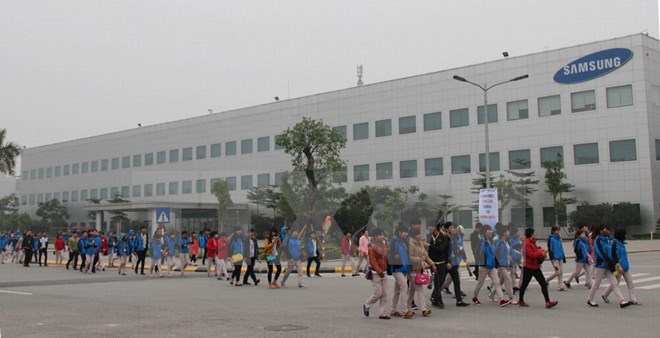RoK tops foreign investment in VN
VGP - The Republic of Korea (RoK) investments in Viet Nam this year surpassed over $60 billion, accounting for nearly 30% of all foreign direct investment (FDI), making it the largest foreign investor in the country, according to the Ministry of Planning and Investment.
 |
Japan ranked second, with nearly US$ 60 billion in investment, then Singapore with nearly US$40 billion.
Vice Chairman of the Viet Nam Association of Foreign Investment Enterprises Nguyen Van Toan said at a forum on reviewing 25 years of Viet Nam and the Republic of Korea’s economic ties held recently that Korea firms have invested US$8 billion each year in Viet Nam in the past four years.
The investment capital flow in the 11 months of this year hit US$8 billion, making the Repblic of Korea the top investor in Viet Nam, he said.
The RoK’s foreign direct investment (FDI) in Viet Nam has occurred in three waves. The first wave occurred after the lifting of the U.S. embargo, which focused on labor-intensive sectors such as textilesand garments, followed by Viet Nam ascension to the WTO wherein investors focused on the manufacturing of electronic goods.
The third wave currently focuses on manufacturing as well as consumer goods, retail, and services.
Some 5,000 Korean companies have invested in Viet Nam in the last 25 years. According to the Viet Nam Chamber of Commerce and Industry, Korean-invested firms in Viet Nam in 2016 contributed almost a third of Viet Nam’s exports and provided around 700,000 jobs domestically.
Korean investment in Viet Nam had surpassed $50 billion by the end of 2016, making it the largest foreign investor in the country to date. In addition, 2017 has seen a considerable interest in the food and finance & banking sectors.
Korean firms are also looking to increase their investments in the agriculture, forestry, and fishery sectors, taking advantage of the preferential tariffs of Viet Nam-Korea Free Trade Agreement.
Samsung leads the pack amongst Korean investors in Viet Nam. It manufactures almost half of its smartphones at its two factories in Viet Nam. Samsung is also setting up a third complex focusing on home appliances and displays with an investment of US$2.5 billion.
Seoul Semiconductor Company also won a license to build a new $300 million semiconductor, while LED manufacturer Lumens will begin manufacturing operations later this year.
CJ Group, a RoK conglomerate is also in the midst of a large-scale expansion in Viet Nam. Its business interest ranges from food processing, fertilizer and feed production, TV shopping, film production, and distribution. In 2016, it invested US$500 million into new projects and M&A.
LG, another electronic giant also has set up a production hub in Viet Nam to manufacture smartphones and televisions. The company will be spending around US$1.5 billion in the new hub by 2028.
Another conglomerate, Lotte Group plans to expand its retail operations five-fold to 60 shopping malls in Viet Nam by 2020.
According to Mr. Le An Hai, Deputy Head of the Ministry of Industry and Trade’s Asian Market Department, based upon the commitments made in the Viet Nam- the Repblic of Korea Free Trade Agreement (VKFTA) in the years to come the two countries will improve both their economic and political relationship.
Viet Nam is to focus on introducing preferential mechanisms for the RoK while the RoK will continue to open up its market to Vietnamese goods, according to Mr. Hai.
Many Korean companies have arrived in Viet Nam in recent times to seize opportunities in its developing economy.
Bilateral trade between two countries is expected to reach $70 billion by 2020 due to the Viet Nam-Korea Free Trade Agreement (VKFTA), which came into effect a year ago.
By Vien Nhu

